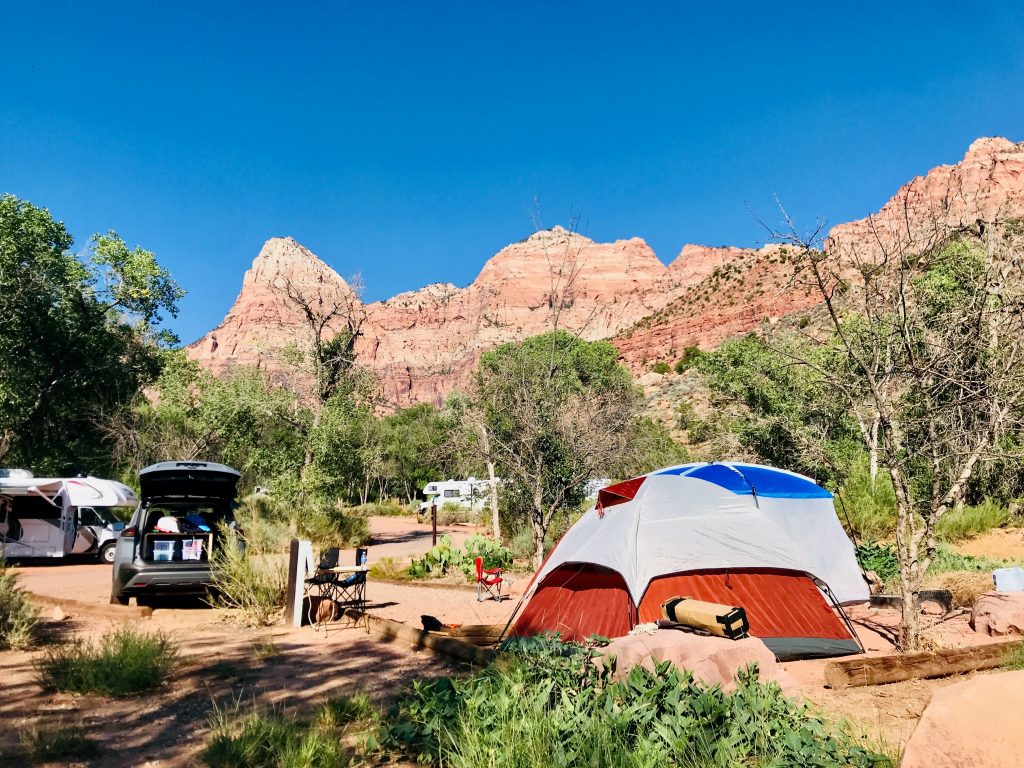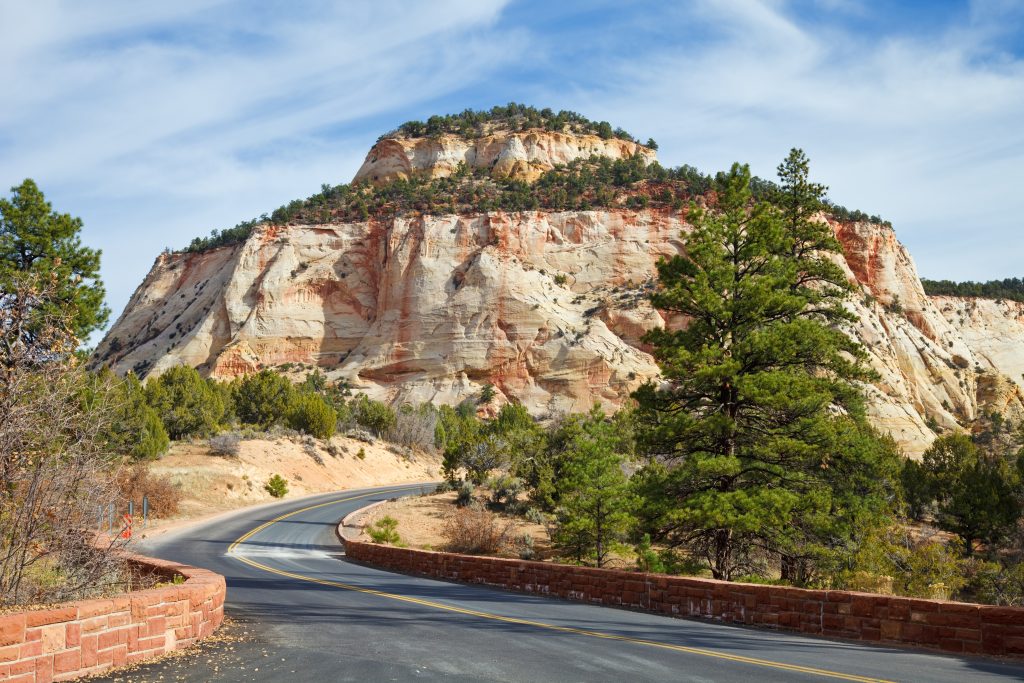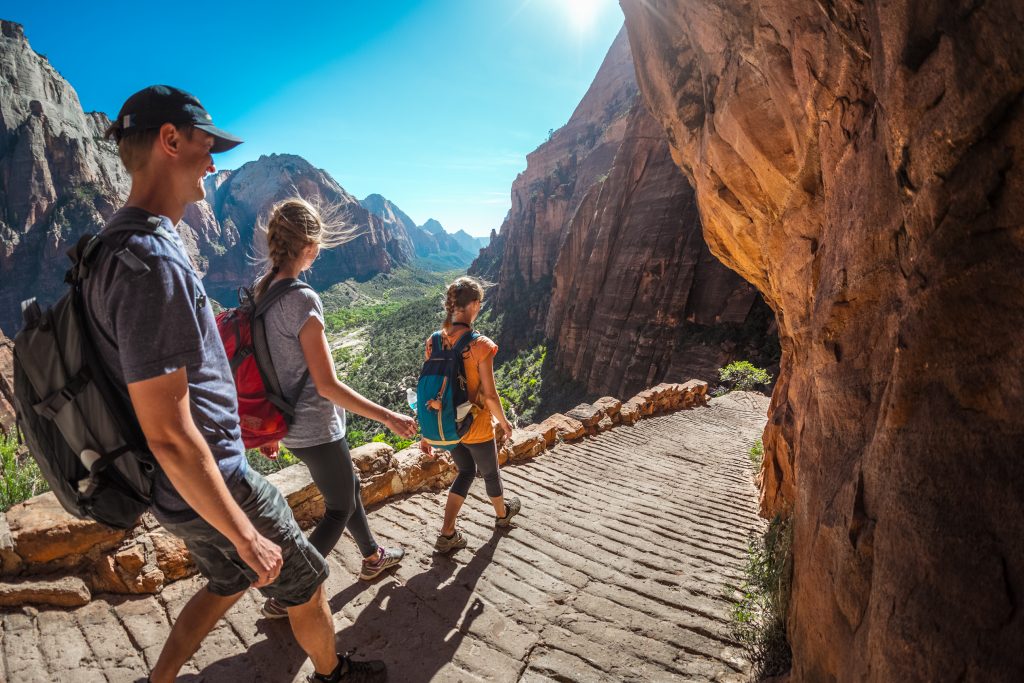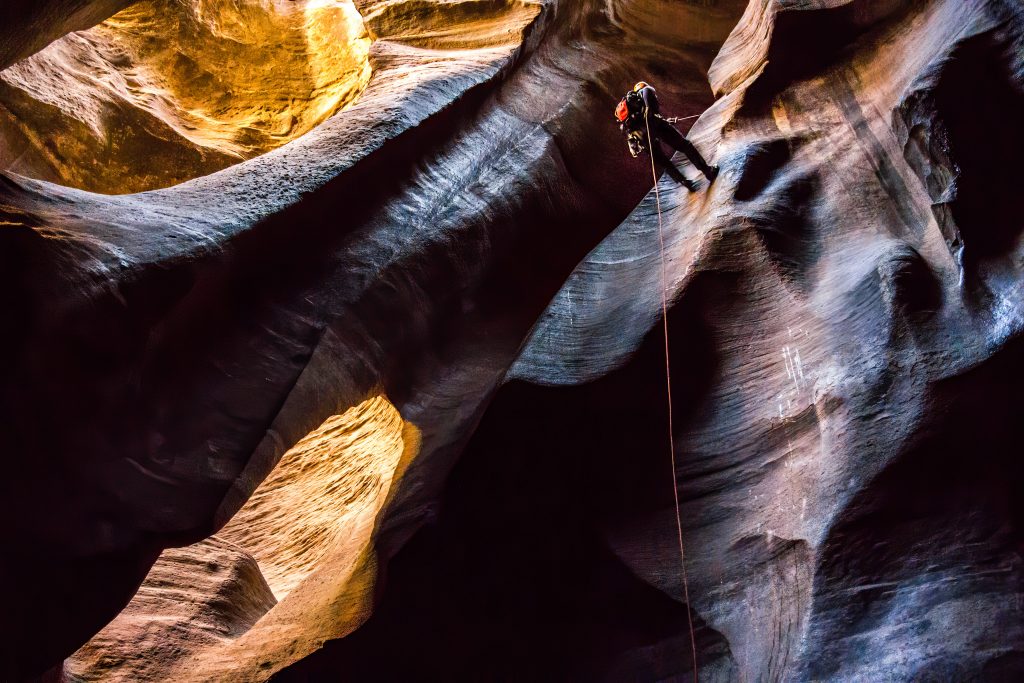The Ultimate Guide To RVing Around Zion National Park
Zion National Park, located in southwestern Utah, is a spectacular destination for outdoor enthusiasts and RV travelers alike. With its towering sandstone cliffs, lush vegetation, and diverse wildlife, it offers a unique experience for those looking to explore the great outdoors. In this guide, we’ll cover the essentials of RVing to and around Zion National Park, including RV campgrounds, park entrances, and exciting activities you won’t want to miss.
RV Campgrounds In Zion National Park

Watchman Campground
Located within the park, Watchman Campground offers 95 RV sites with electric hookups. Reservations are highly recommended, especially during the peak season from March to October. The campground provides easy access to the park’s shuttle service, restrooms, and a dump station. Watchman Campground is situated near the Virgin River, providing picturesque views of the surrounding sandstone cliffs. Additionally, it’s within walking distance of the Zion Canyon Visitor Center, where you can gather information and plan your adventures within the park.
South Campground
Also within the park, South Campground has 127 RV sites available on a first-come, first-served basis. There are no hookups, but the campground offers restrooms, a dump station, and potable water. South Campground is just a short walk from the park’s shuttle service, making it easy to explore Zion’s attractions without worrying about parking. The campground is surrounded by cottonwood trees, offering some shade during the hot summer months, and its proximity to the Virgin River provides a refreshing atmosphere for campers.
Zion River Resort
A private RV resort just outside the park, Zion River Resort offers full-hookup sites, a swimming pool, a hot tub, and laundry facilities. It’s conveniently located close to the park’s south entrance, making it an ideal base for exploring Zion. The resort also features a camp store, a playground for kids, and a dog park for your furry friends. With its top-notch amenities and friendly staff, Zion River Resort is a great option for those looking for a more luxurious RV camping experience.
Dispersed Camping
For a more remote and primitive experience, consider dispersed camping in the nearby Bureau of Land Management (BLM) or Forest Service lands. Be aware that there are no amenities, and you must follow Leave No Trace principles. Dispersed camping offers unparalleled solitude and a chance to connect with nature in a way that’s not always possible in developed campgrounds. Keep in mind that you’ll need to be self-sufficient, as there are no services like trash collection or water available. Make sure to research the specific rules and regulations for the area where you plan to camp.
Accessing the Park’s Entrances via RV

Zion National Park has three entrances:
- South Entrance: The most popular entrance, located near Springdale, UT. It’s open year-round and provides easy access to the park’s shuttle system. RVs up to 50 feet in length can enter the park through the south entrance.
- East Entrance: Accessible via Highway 9, the east entrance is perfect for those coming from Bryce Canyon National Park. Note that RVs over 13 feet 1 inch in height or 40 feet in length are prohibited from passing through the Zion-Mount Carmel Tunnel.
- Kolob Canyons Entrance: Located off I-15, this entrance provides access to the park’s lesser-known Kolob Canyons section. There are no restrictions on RV size at this entrance.
Best Times to Visit Zion National Park
The peak season for Zion National Park is from March to October, with spring and fall offering pleasant weather and fewer crowds. During these seasons, temperatures range from the 60s to the 80s, making it comfortable for hiking and exploring the park. Wildflowers bloom in the spring, while fall brings vibrant foliage, adding to the park’s scenic beauty.
Summer can be hot, with temperatures often exceeding 100 degrees Fahrenheit, and it’s the busiest time of the year for the park. If you choose to visit during the summer, be prepared for crowded trails and campgrounds. It’s crucial to stay hydrated and avoid strenuous activities during the hottest parts of the day.
Winter visits offer solitude and unique snow-dusted landscapes but may have limited access to some areas of the park due to snow and ice. Temperatures can drop below freezing, so be prepared with appropriate clothing and gear. Keep in mind that some park facilities may have reduced hours or be closed altogether during the winter months.
Hiking Trails in Zion National Park

Zion is a hiker’s paradise, with trails ranging from easy walks to challenging adventures. Some popular trails include:
Riverside Walk
The Riverside Walk is a picturesque and easy trail located in the breathtaking Zion National Park, Utah. With a length of 2.2 miles round trip and a minimal elevation gain of 57 feet, this leisurely hike is suitable for all ages and fitness levels, making it a favorite among families and casual hikers. The well-maintained, paved trail offers an excellent introduction to the park’s magnificent scenery and diverse natural features.
To access the Riverside Walk, visitors must take the park’s shuttle bus to the last stop, the Temple of Sinawava. The trail begins in the northern section of the park and meanders alongside the crystal-clear Virgin River, offering hikers a serene experience in a lush, green environment. The towering sandstone canyon walls, some reaching up to 1,500 feet, create a dramatic backdrop for the trail and provide ample shade during the hot summer months.
As hikers stroll along the Riverside Walk, they will encounter a diverse array of flora and fauna, including mule deer, wild turkeys, and squirrels. The trail is particularly well-known for the enchanting Hanging Gardens, which consist of ferns, mosses, and wildflowers clinging to the moist canyon walls. These gardens create a stunning contrast with the surrounding red rock cliffs, providing a unique sight to behold.
In addition to its natural beauty, the Riverside Walk trail also serves as the gateway to the world-famous Narrows hike, which is renowned for its challenging river wading and narrow canyons. As the Riverside Walk comes to an end, hikers have the option to continue into the Narrows or simply retrace their steps and enjoy the tranquil ambiance of the Virgin River and surrounding canyon.
Emerald Pools
The Emerald Pools trail system in Zion National Park, Utah, is a collection of three interconnected trails that showcase the park’s shimmering pools and cascading waterfalls. These trails are aptly named Lower, Middle, and Upper Emerald Pools, with varying levels of difficulty and length. The Lower Emerald Pools trail is an easy, 1.2-mile round trip with minimal elevation gain, while the Middle and Upper trails progressively increase in challenge.
To access the Emerald Pools trails, hikers must take the park’s shuttle to the Zion Lodge stop. From there, a footbridge across the Virgin River marks the start of the trail system. As hikers make their way through the trails, they will encounter a range of scenery, from verdant riparian habitats to rugged desert landscapes. The series of pools and waterfalls are the main attraction, with their vibrant green hues resulting from the growth of algae in the water.
These shimmering oases create a serene and inviting atmosphere amid the towering canyon walls.
The Lower Emerald Pools trail leads hikers to a picturesque waterfall that spills over a cliffside alcove, creating a refreshing mist. For those seeking a more challenging experience, the Middle and Upper Emerald Pools trails provide steeper terrain, offering expansive views of the canyon and more secluded pools. Regardless of the chosen route, the Emerald Pools trails promise a unique and rewarding hiking experience in Zion National Park.
Angels Landing
Angels Landing is a thrilling and challenging hike located in Zion National Park, Utah. This 5.4-mile round-trip trail is known for its steep inclines, narrow ridges, and dramatic drop-offs, making it unsuitable for those with a fear of heights or inexperienced hikers. With an elevation gain of 1,488 feet, the trail presents a physically demanding ascent that rewards hikers with breathtaking panoramic views of Zion Canyon.
Access to the Angels Landing trail begins at the Grotto shuttle stop. Hikers traverse a footbridge across the Virgin River before embarking on a series
a series of switchbacks known as the West Rim Trail. As the trail continues to ascend, hikers will encounter a steep section called Walter’s Wiggles, a series of 21 tight switchbacks that lead to Scout Lookout. From there, the trail’s most challenging and iconic section, the spine of Angels Landing, commences.
The spine, also known as Hogsback, requires hikers to navigate a narrow ridge with sheer drop-offs on either side, aided by a series of anchored chains for support. This final stretch is not recommended for those with a fear of heights or during inclement weather, as the exposure can be treacherous. For those who dare to continue, the reward is an awe-inspiring panoramic view of Zion Canyon, with the Great White Throne, Cathedral Mountain, and the Virgin River nestled below.
Despite the challenges it presents, Angels Landing remains one of Zion National Park’s most iconic and sought-after hikes, offering a thrilling adventure and unforgettable views for those willing to tackle its heights.
The Narrows
The Narrows, situated in Zion National Park, Utah, is an extraordinary and strenuous hike that takes adventurers through the winding depths of the Virgin River. This unique 9.4-mile round-trip trail requires hikers to wade, swim, or navigate through the river, as there is no established path along the canyon floor. The Narrows boasts towering, narrow canyon walls that provide an otherworldly experience for those who dare to explore its depths.
To access the Narrows, hikers must first take the park’s shuttle to the Temple of Sinawava stop and follow the Riverside Walk trail, which serves as the gateway to the Narrows. Once the paved trail ends, hikers will enter the river and begin their journey upstream. It is essential to wear proper gear, including sturdy water shoes and a walking stick, to ensure safety and comfort during the hike. Additionally, hikers must be aware of flash flood warnings, as the canyon is prone to sudden floods that can be life-threatening.
The unparalleled beauty of the Narrows lies in its serpentine watercourse and towering sandstone walls, some reaching over 1,000 feet high and only 20-30 feet apart at their narrowest. The dynamic light and shadows that play upon the canyon walls create a mesmerizing visual spectacle. The Narrows provides a thrilling and immersive experience in Zion’s wilderness, offering hikers a one-of-a-kind adventure they will never forget.
More Things To Do In Zion National Park

Scenic Drives
Zion offers two stunning scenic drives – the Zion Canyon Scenic Drive and the Zion-Mount Carmel Highway. During the peak season, the Zion Canyon Scenic Drive is only accessible via the park’s free shuttle service, while the Zion-Mount Carmel Highway is open to private vehicles. Both drives offer incredible views of the park’s towering cliffs, deep canyons, and unique rock formations.
Ranger-led Programs
Join a ranger-led program to learn more about the park’s history, geology, and wildlife. Programs may include guided hikes, talks, and evening presentations. These informative programs are a great way to deepen your understanding and appreciation of Zion’s unique environment and ecosystems.
Canyoneering
For experienced adventurers, Zion National Park offers excellent canyoneering opportunities. Canyoneering involves navigating through narrow canyons using a variety of skills, such as hiking, scrambling, rappelling, and swimming. Some of the popular canyons for canyoneering include the Subway, Orderville Canyon, and Pine Creek Canyon. Keep in mind that most canyoneering routes require permits. You should have the necessary skills and equipment to safely undertake these challenging adventures.
Stargazing
Zion’s remote location and dark skies make it an excellent destination for stargazing. On clear nights, you can observe the Milky Way, constellations, and even meteor showers. Join a ranger-led stargazing program or simply find a quiet spot to lay out a blanket and take in the beauty of the night sky.
Conclusion
Zion National Park is an unforgettable destination for RV enthusiasts looking to immerse themselves in the natural beauty of the American Southwest. With a variety of campgrounds to suit every traveler’s needs, easy access to the park’s stunning entrances, and a plethora of activities to enjoy, your trip to Zion is sure to be a memorable experience.
With proper planning and a sense of adventure, your Zion National Park RV trip will be a once-in-a-lifetime experience. So pack up your RV, hit the road, and get ready to explore the majestic landscapes of Zion National Park.
Click here to check out RV rentals near Zion National Park!